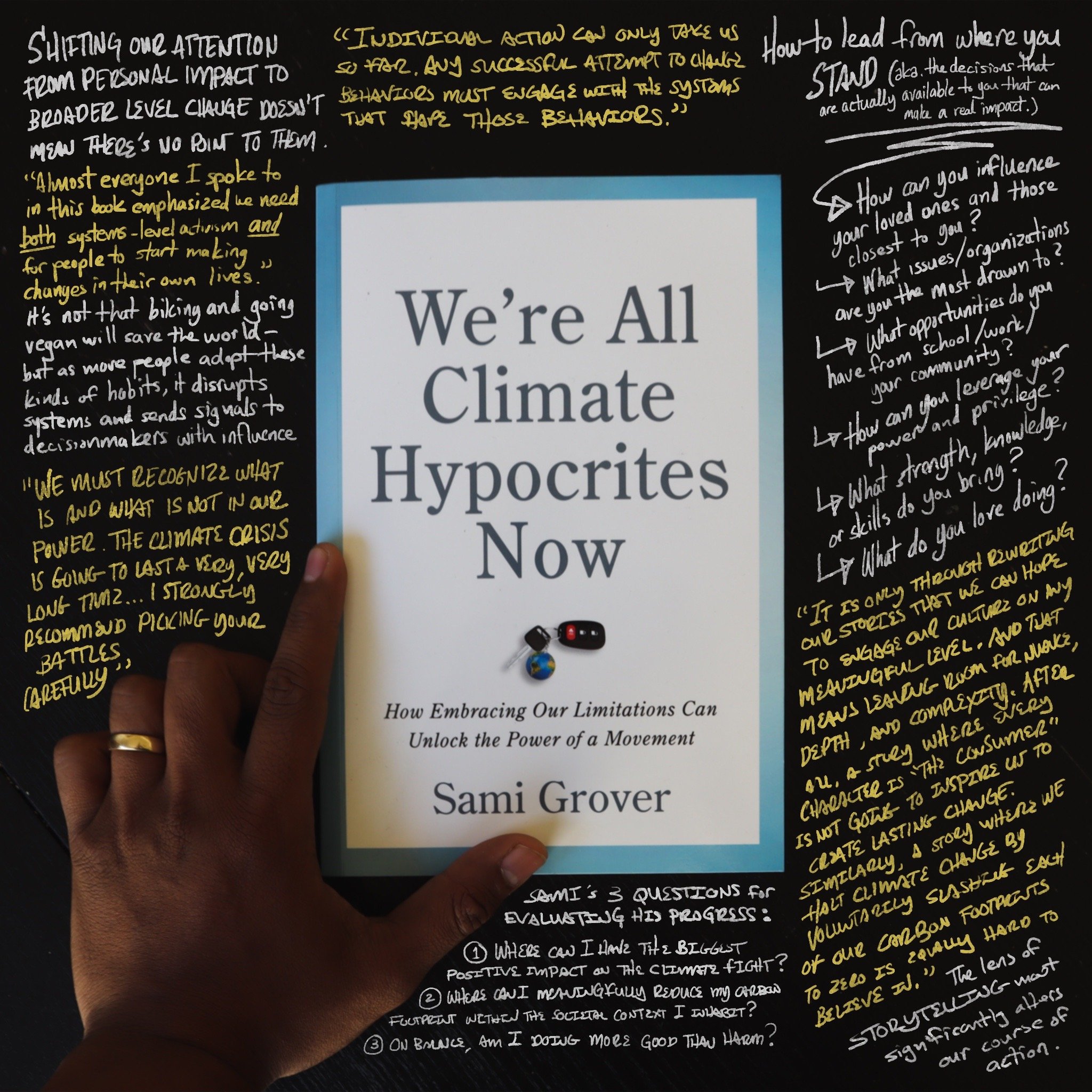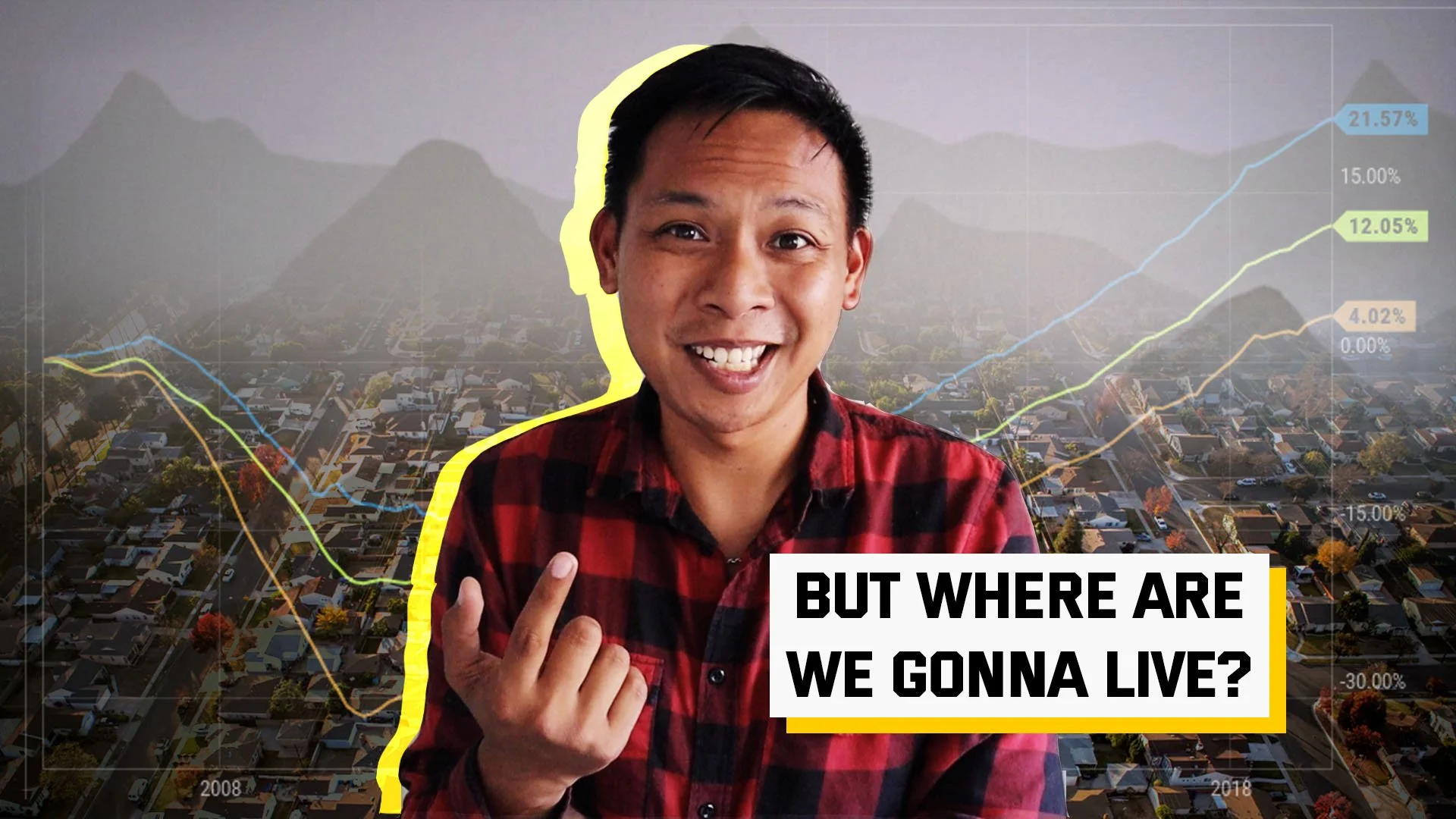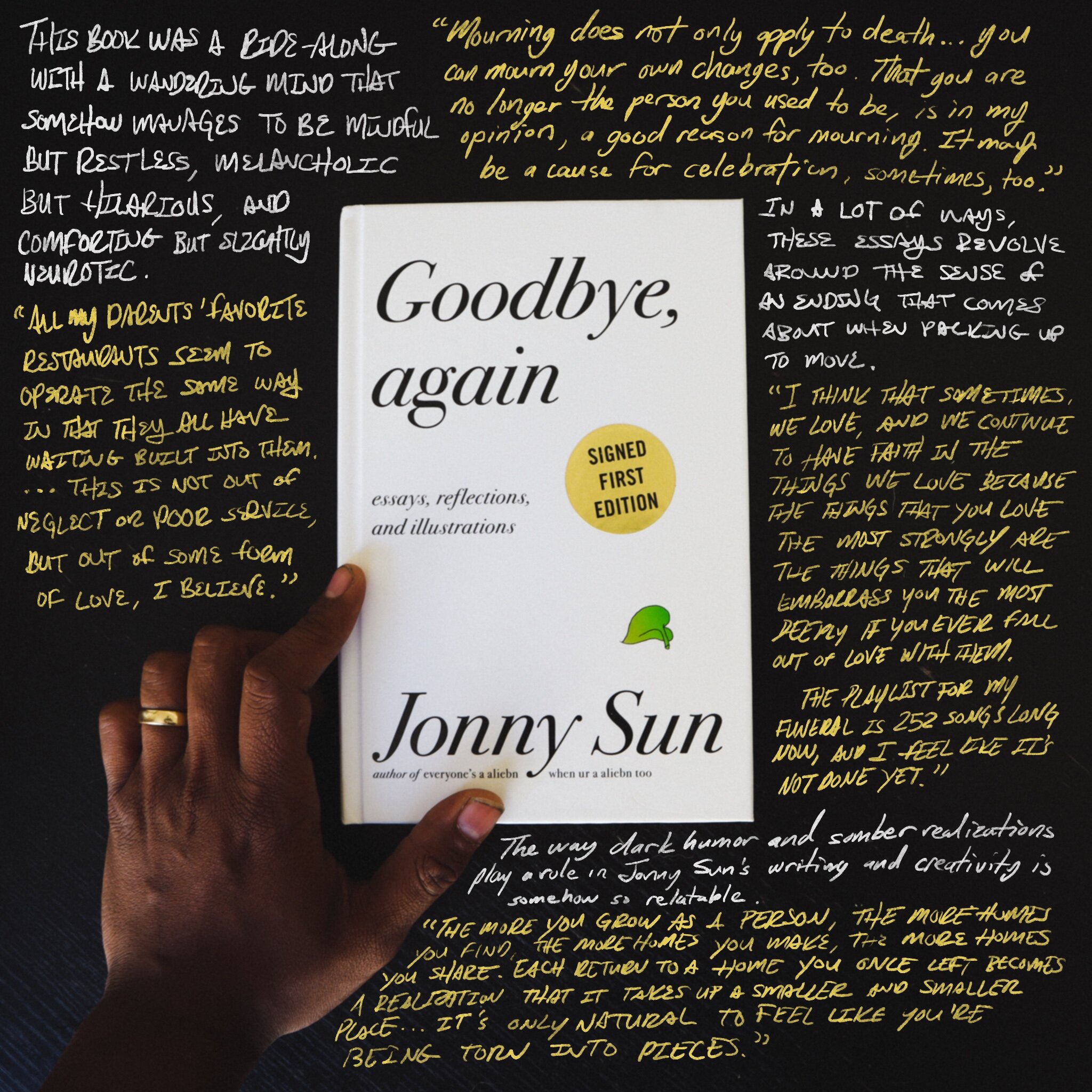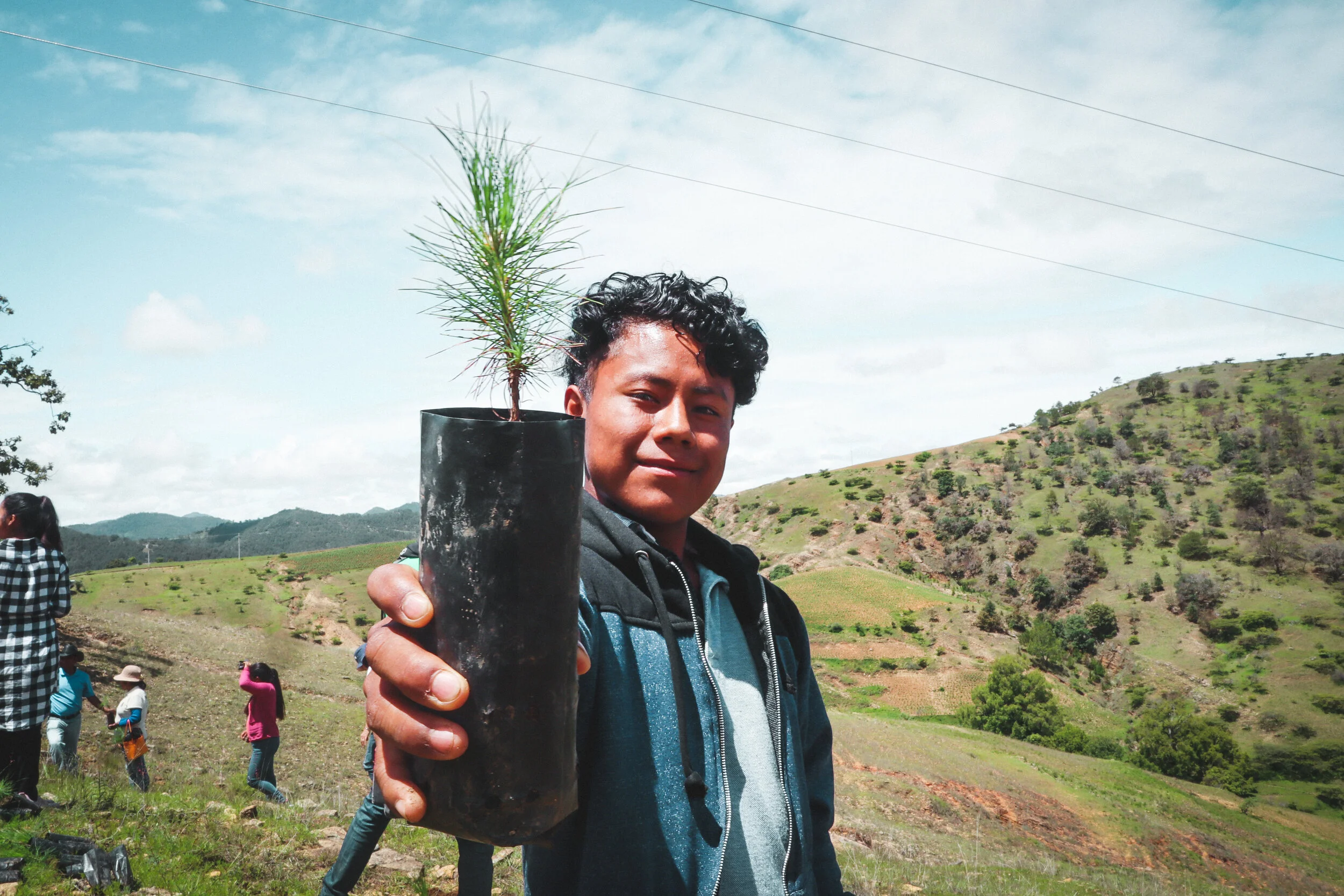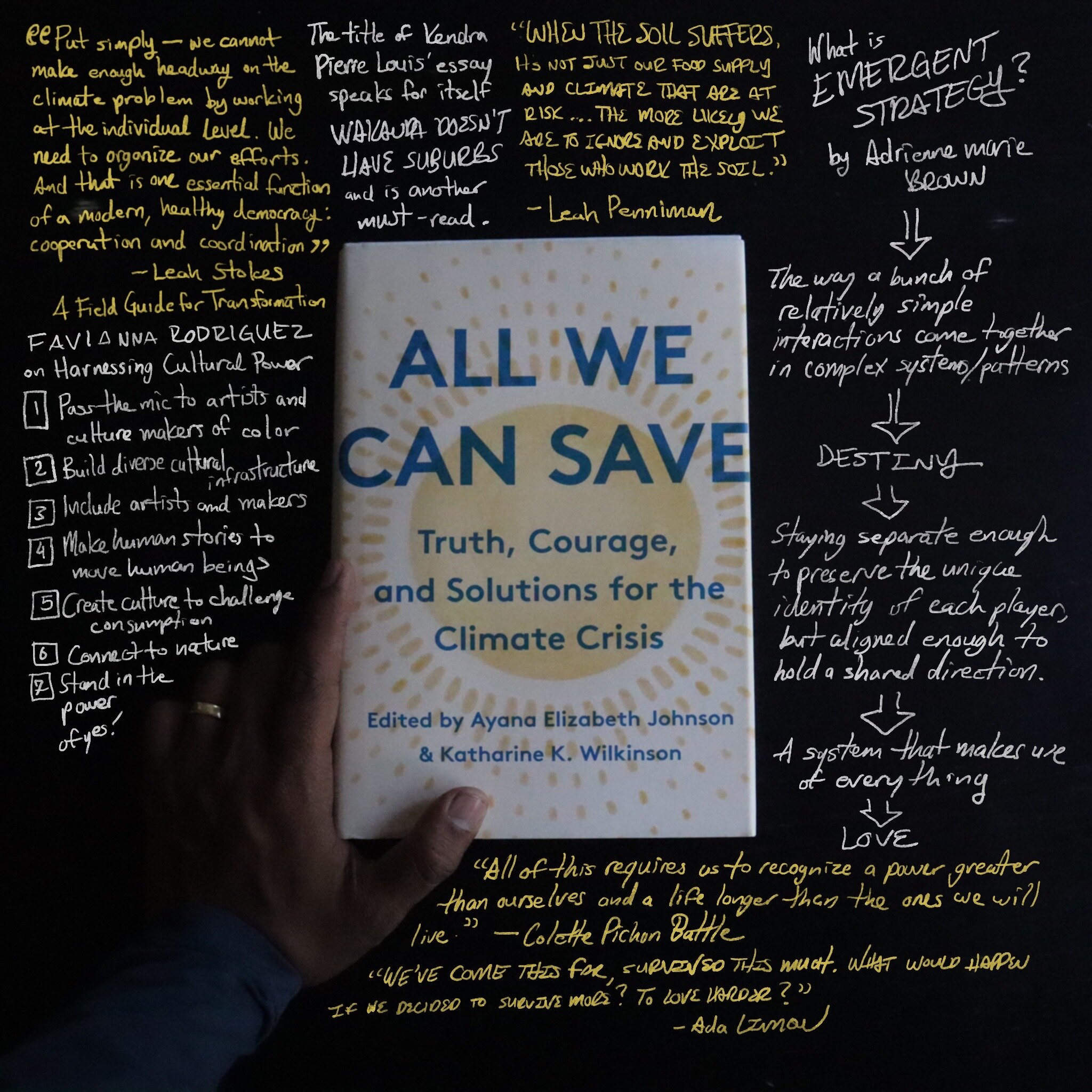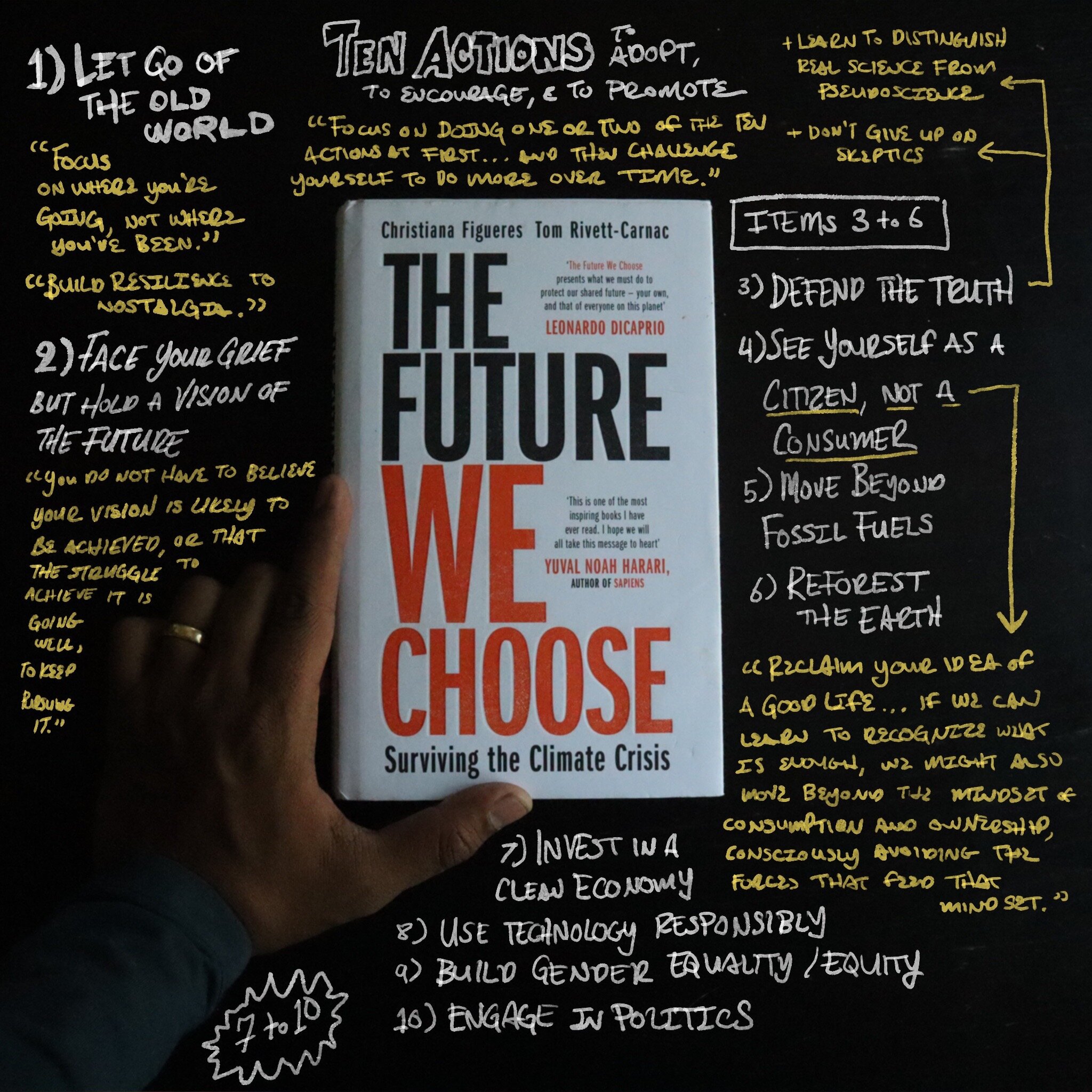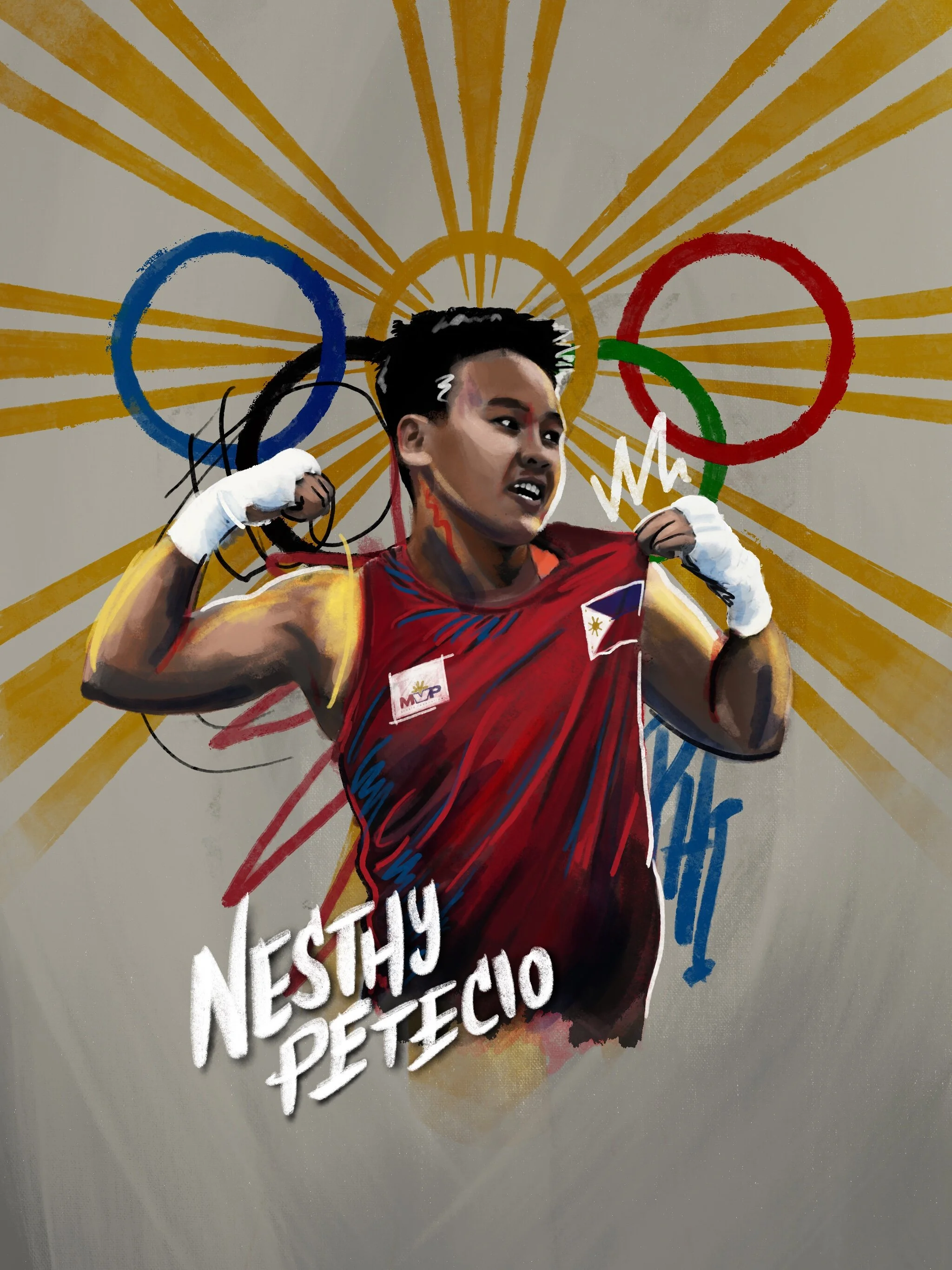If I can sum up what it’s been like to lean into the climate policy discussions happening at both a national and global level, it’s this: Lots of activity, not much action.
Yes, an infrastructure bill passed, but it’s climate provisions won’t do much without their counterparts in a reconciliation bill.
Yes, COP26 is happening, but the most ambitious commitments are structured in a way that largely echoes past goals that weren’t met at all.
But it’s not over.
Policy and governance alone don’t hold all of the keys to climate action, but they hold the keys that make it a whole lot more effective when each of us use ours. It’s easy to think that calls for climate action go unheard, and I get why it feels that way, but applying pressure works. Not perfectly, but I doubt some of the most effective pieces of climate policy would exist without the people-pressure built up over the past decade.
Applying pressure will look different for different people, but everybody’s got some lever they can pull. Do it for what you love about living.
A Last Minute Race in New Mexico
A few weeks ago, the night after running my half marathon, I found myself walking on a bridge across the Rio Grande on a perfectly temperate night in New Mexico just admiring the feeling of being somewhere less familiar, taking in the trees that grew alongside the river.
It brought back all the good feelings that come with being in a new setting and having all your senses turned on.
I love that feeling of new places. I love the freedom of exploring them. And I love getting to push myself to take on challenges like races, climbs, and travel checklists.
I love my regular life too, and while I think it’s a good thing to keep mixing stuff up, being a dad and doing work I love is nothing I feel I have to escape from. But side quests that fill my bucket helps me be the best version of myself throughout the main storyline. They’ve gotten harder to fit in the past couple years, and it’ll probably get even more challenging for a little while, but it’s always worth the effort.
New Climate Reads
I’ve been working on climate related things for about five years now, and when it’s something you talk about everyday it’s easy not to notice some of the ways your thinking evolves over time and gains nuances.
One of those ever evolving nuances is how we talk about the connection between individual responsibility and the need for systemic change. Being a climate puritan might give you reasons to not feel so guilty, but it won’t do much to actually help the problem. On the other hand, completely ignoring your own individual efforts isn’t right either.
I could go on and on about this topic and I’m sure over time I will. But I figure it’ll be easier to share some of my booknotes, because Katharine Hayhoe and Sami Grover have written some good stuff that’s helped me process these ideas. And Michelle Nijhuis’ Beloved Beasts book was a great reminder that these conversations are often complex- and that can be seen in the history of conservation. I highly recommend all three book!
Balete Drive
I’ve been saving this post for spooky season!
I’ve been an artist-in-residence with Inheritance Magazine - a platform focused on stories about faith and AAPI identity, and the first piece I got to contribute some art for was all about the Kaperosa- the white lady of Balete Drive.
Man, the Philippines has one of the richest lineups when it comes to scary, folkloric beings.
The Kaperosa looks similar to a lot of pale ghost ladies in Asian mythology (y’know, like the girl in The Ring) but she haunts a very specific location where she was attacked and killed in the 1950s. Balete Drive runs through a suburb of Manila where taxi drivers often report Kaperosa sightings as she searches for her killer.
Balete Drive is named for the canopy of balete trees that line its sidewalk. In English, those are known as strangler fig trees- trees that begin growing on the limbs of other trees, until their roots reach low enough to enter soil and then it starts to grow around the host tree. Deprived of light, that tree dies leaving a hollow center in the balete. For some reason I always thought it was an apt metaphor for the colonial mentality.
Yanan Melo wrote the article that inspired this drawing, and it brings up some rich insight about how a colonial mentality continues to haunt.
The White Lady
Ghost Stories and the Power of Colonial Storytelling
“Blonde hair, blue eyes, white skin.” My father gave me an image of who I would marry. See, he almost married a white girl himself. He lived for about five years in the United States before moving back home to the Philippines to become a church planter. He had every opportunity to marry a white girl in the States, but it never happened. Dad told me, “God called me home, and I listened.”
Upon returning to the Philippines, he met my mother. She had darker hair and deep brown eyes, but my dad reflected that “at least she had lighter skin.” She wasn’t as white as his ideal spouse, but “white enough” to satisfy desire. He even used the word mestisa to describe her, a racial term used by Spanish colonizers to classify Filipinas who weren’t fully white but close enough through their mixed ancestry. Still today, mestisa describes the standard of what it means for women to be beautiful in the Philippines, a symbol of colonial mentality.
Driving through the streets of Manila, you’ll see billboards that advertise skin whitening products. Whether they’re drugs that contain the chemical glutathione or papaya whitening lotions, these products continue to shape Filipino imaginations into the lie that Black or Brown skin is malevolent, and white skin is desirable. This is one of the reasons that many Filipinos maintain racist imaginations about Black bodies.
Spanish and American colonizers brought whiteness upon our lands. Today, whiteness lingers as a ghost, and many Filipinos struggle to see beyond it, cursed with an inferiority complex that strives for the white ideal — an ideal that can never truly be achieved.
There is a street in Manila known for a ghost story. Stretching for about a mile across the New Manila district, with tall balete trees serving as a canopy, Balete Drive is a two-lane throughway haunted by the presence of a white lady. According to a variation of a local folktale, she was assaulted and murdered on Balete Drive in the 1950s, but her spirit never left. Dressed in a white gown, with long hair covering her face like a veil, she became the kaperosa, a white lady who haunted the streets in search of her murderer. Many sightings were later reported as taxi drivers and other motorists claimed to have seen her staring at them through rear-view mirrors. Horrified by the look in her eyes, they would abandon their vehicles and run away. The storytellers maintain that, until today, she hasn’t found her murderer. Thus, her haunting continues until she finds him.
Back in the Philippines, the stories of white ladies were told to children in an effort to scare them, like traditional campfire stories in the United States. I remember driving down Balete Drive one day with my father, the story of the white lady ringing in my head. I saw the balete trees standing strong, firm, and ominous as they stretched over me with their shadows.
I did not see the white lady as we drove down the road. Instead, she appeared in my dreams as I went to sleep that night. Folding my eyes at the chance to rest, there she was. Blonde hair, blue eyes, white skin, an image of the woman my father wanted me to marry, a white lady who haunted my sleep. My father wanted me to marry her because he never got the chance to. But today, she remains only in my mind, a horror story of the colonial mentality that cursed my family and my father’s imagination.
Because of the white lady, my parents fought constantly as I grew up. My mestisa mother was never enough for my dad as he desired for our family to become white. I kept hearing about divorces and marital dysfunctions from other families, many of which were due to financial problems. But my parents’ problems were different — money was only peripheral to the real issue.
“I can’t be with your mom anymore,” Dad told me under the shadows of balete trees. “I just want a normal life, but I don’t know if I can have it with her.” He recounted the time he almost married a white girl, and said, “Your mom is simply not as beautiful as her… but I still love your mom.” So as he stared at the hovering cloud of leaves above us, Dad said, “Maybe moving to America will be better for us. They have better churches there, and even better marital counselors. Maybe America can fix us.”
In August 2015, we successfully moved to the peaceful, white suburbia of Dyer, Indiana. At first, it was all very exciting — it was a new place to call “home”. It gave my family a new possibility to root ourselves and promised my father a new beginning.
But unlike Manila where everyone looked like us and spoke like us, Dyer only contrasted my family’s Brownness against the whiteness of those who lived around us. Thus, being in closer proximity to whiteness than when we were in Manila, my dad’s colonial mentality only worsened. Rather than being satiated, he wanted more and more of the whiteness he had already desired.
Just a few years later, my dad left our family to pursue a white woman. He ended up getting rejected by her, causing him to fall into a state of deep depression and anxiety.
It broke me to see him weep and drown in his tears. And it struck me how much my father was in love with whiteness. He was also in love with the American Dream, the possibility of disembodying our family from our Brown bodies. He thought abandoning the Philippines would fix us. But it was only a matter of time until God exposed the broken promises of the American Dream. The white ideal remained merely an ideal, and the white lady continued to haunt my dreams. Because unlike what my dad originally thought, America never healed my family.
For most of my life, the image of the white lady defined my life and existence. It seemed like I had no way out of my father’s dream, forever branded by whiteness. I realized that a lot of my struggles stemmed from the stories my colonized father told: the American Dream, the five years he spent working in America, and the many opportunities he had to marry a white girl. These stories shaped my imagination and my desires.
Though it’s painful for me to reckon with my family’s broken history, it does give me a new possibility to reassess, reevaluate, and deconstruct the stories I’ve been told. Indeed, the power of storytelling surpasses the grandeur of military might or material wealth. I reflect upon the pen of Dr. José Rizal, whom we celebrate in the Philippines as our national hero. His two greatest works, Noli Me Tángere and El Filibusterismo, were novels — stories — that helped inspire the Filipino imagination to rebel against Spanish oppressors and fight for our liberation. As a result of his profound storytelling, we won and declared our national independence on June 12, 1898. And it all began with a story, a story of liberation and emancipation from the West.
If not for the story of the white lady, Balete Drive would have been just as ordinary as every other street in Manila.
Today, as I remember Balete Drive and the time my father and I spent there, I am in the process of deconstructing the stories of my childhood and reconstructing a new possibility for my future. I am hopeful that the white lady will not remain in my imagination; indeed, she is fading away as the clouds open up for the sun to shine again on Balete Drive. In many ways, a new world beyond whiteness begins with deconstructing our stories, the stories that shape our lives and destroy our communities, so that we may finally heal and recover. And this is God’s work of restoration and redemption: a re-orientation of our stories around the voice of Jesus, whose gospel is one of love and belonging.
Indeed, in Christ, no story is beyond repair. Our stories are being liberated by God who consecrates our lives and experiences, uniting us with divine love. May we rest on that hope and strive for a better future where we can see beyond whiteness, and where the ghosts of our pasts can never haunt us again.
Seven Podcasts I'm Loving
And, it’s World Podcast Day! While I had to take a hiatus from my own show this year with all that’s been happening, it remains one of my favorite mediums. I think the format gives a chance to nuance messages and make things more personal that most other mediums don’t provide.
Even though folks often say the podcasting world is already oversaturated, I think there will always be room for more shows if they’re the right ones for the moment. To further drive that point home, here are some of my favorite shows that have launched since the past World Podcast Day, along with a few favorite episodes from shows I continue to keep up with.
Anyone else kind of a podcast junkie? Do you subscribe and listen regularly or cherry pick episodes? What are some more recent faves?
Why House Hunting is So Hard Right Now
Last week we finalized the sale of our first house. It was a big move, a long process, and another big change on top of endless change this year. But ultimately this was the right decision and we’re really happy with how things unfolded for our family.
That said- it wasn’t easy! This is a hybrid explainer of our housing crisis and a video journal of how that intersected with our lives.
Happy to be in our new home now getting this place set up for newborns, and trying to take advantage of the views from our patio.
Have you moved in the past year or two? How was it for you?
Rhys' Poster
I drew this when we were waiting for Rhys to be born. Adventure was more than just the theme of our nursery. Really it’s an overarching theme of how our family faces the world.
I tried out a totally different drawing style and liked how it turned out. Every item making up the collage ties to some value or thought I wanted to pass on and it all comes together in a Northwestern campscape. We got it printed on a metallic wall hang and I’m super happy with how it came out.
I loved making this. Even though it’s been in his room his literal whole life, it made me super happy when he started pointing out stuff on there that he liked. Bear! Fish! Circle!
Now I just have a few weeks left to finish up two more.
Ted Lasso: A Theory
I used to feel weird about making stuff that felt like fan art to me, thinking of it as a lesser form of creativity. But self-consciousness is actually a common enemy of creativity, and you should play to what excites you. So here’s a whole video on one of my favorite things about Friday: Ted Friggin’ Lasso.
I’ve heard so many people celebrate Ted Lasso for being a refreshingly feel-good show for some challenging times. And while that’s true- I think it resonates for deeper reasons than that.
I also riff a bit on why it’s been over ten years since the last widely successful comedy and why one of the biggest movie genres has suddenly gone missing in favor of cozy, gentle shows.
To Light Their Way
One of the biggest paradoxes about parenthood is how you influence EVERYTHING and yet have so little control over things when you really think about it.
Like… we deal with the impact of how we were raised for the rest of our lives. The kiddos soak up everything. You let one grown-up word slip at the wrong time and you might have to deal with hearing that on repeat for a long time to come. The stakes get higher when you see some of your own traits- including your vices- carried by your child.
That’s a lot to carry, but on the flip side? You drop a kid off for the first day of school and you realize how much stuff- in the grand scheme of their life- is gonna be out of your control. One long night with a feverish baby and you realize so much is out of your hands.
Weird combo, right? Responsible for so much, in control of so little?
My grandma used to wake up at 4am and start praying. For hours. Now that all makes sense. She had nine kids!
Kayla Craig has done the world a tremendous favor with Liturgies for Parents and her book To Light Their Way which is officially out today! This book is full of prayers for moms and dads- especially for those moments where you don’t have the words.
I’m gonna let you in on a secret, okay? I got misty eyes reading the freaking Table of Contents! How does that even happen?
Reading the list of moments big and small, personal and global, felt like taking a long look down the road of parenthood and seeing it in its wholeness. There are prayers for pregnancy and infertility, for the birth of a sibling, adoption, a new pet, and the first day of school. For when your kid is bullied or when your kid bullies someone. Stressful mornings and playtime. Gun violence and racism. Advent. Mother’s Day. The loss of a pet, learning to drive, and leaving home.
Beneath Dodger Stadium
The land beneath us contains stories, and over the past two years while I’ve had to travel a lot less in search of stories, I’ve learned how the land close to home still often contains stories that have been buried or overlooked.
Dodger Stadium is the perfect example of this.
I’ve gone to a good number of games here. I’ve spent more time driving around Central L.A. than I wish to admit, but it was only this year when I learned about the three neighborhoods and the Latino families that were forcibly removed when Dodger Stadium was built.
Part of what sticks with me about this story are how so many elements of it are still in place. And whenever an Olympic year or a World Cup comes to a city, similar things still happen.
But hopefully knowing our past missteps will help us recognize our future ones before they happen.
Books for Goodbyes
My reading list over the past month seemed to revolve around the themes of grief, saying goodbye, and choosing life in spite of it all.
Each of these was a book I anticipated for quite a while; two by Asian American authors, another by an old favorite.
I don’t exactly know how to describe what makes Jonny Sun’s writing so incredible, or how it manages to be both so funny and honest in its simplicity and melancholy, but it does all that (see his ranking of the last fifteen minutes before the end of the world) and anchoring this collection of thoughts around the theme of moving made it all the more relatable.
Reading @agedungs graphic memoir chronicling the loss of his partner felt so deeply personal, yet I loved the way his journey was interwoven against the life stories of surfing pioneers who found the hobby as a solace of joy during an imperialist moment.
The Midnight Library had been on my list since I heard it announced. In many ways it seemed like a spiritual successor to @mattzhaig’s How To Stop Time, which is an all time fave. I love any piece of art that makes you feel deeply grateful to be alive.
We Are All Home On Earth
When their leader is assassinated, we hashtag hope for Haiti. We talk about how sorry we feel for people, mistaking men and women for their misery.
When an earthquake strikes we laud their resilience. We praise their ability to weather another storm, in the process making us feel better about it without having to change a single thing.
When that hope for a better life and resilience through every storm leads to a treacherous journey across seas, we run out of things to say. Convenient things to say.
Easier not to recognize hope and resilience anymore than to realize when we’re the ones standing in the way of it.
Easier not to recognize a country’s independence for over 20 years as a successful rebellion of an enslaved population when that would force you to reckon with your own practice of slavery.
Easier to keep a country in debt for 122 years than to trade and engage as equals.
Easier not to know this history. To know nothing of their Gold Reserve, rice dumps, and Novum Energy. Easier to stir up a panic over border crossings than to understand the completely legal and agreed upon process of asylum.
Give up the easy and comfortable narratives we’ve taught ourselves about Haiti.
Oaxaca, pt. 2
It’s not much of a secret that one of my very favorite things to do in life is to experience cultures and traditions through the firsthand stories of of people who live it.
My time in Oaxaca was full of that.
I’m excited to share to share this peek behind the scenes of what a week of community visits, interviews, hospitality, and story collecting looks like. From edible corn fungus, to the seven types of mole, to the postage stamp museum.
So grateful for people like Alier, Esperanza, and Teborino for their welcoming spirit.
Oaxaca, pt. 1
It’s not much of a secret that one of my very favorite things to do in life is to experience cultures and traditions through the firsthand stories of of people who live it.
My time in Oaxaca was full of that.
I’m excited to share to share this peek behind the scenes of what a week of community visits, interviews, hospitality, and story collecting looks like. From edible corn fungus, to the seven types of mole, to the postage stamp museum.
So grateful for people like Alier, Esperanza, and Teborino for their welcoming spirit.
La Ruta de Mezcal
My mezcal video is now live!
I knew this was going to be a fun outing, but I didn’t expect:
• to learn so much about the Filipino contribution to the history of mezcal
• agave to be so wildly diverse
• so many possible distillates of agave- from puntas with its 80% alcohol volume to the kombucha-like pulque
• the romantic tragedy of ancient Mexico’s agave goddess
• to discover the best at-home bar ever
Among other things!
This was a really fun video to make- and definitely a fun one to go out and shoot. Big thanks to @ramblingspirits for the adventure… be sure to reach out to them when in Oaxaca!
Stand With Afghanistan
I befriended a couple of students from Afghanistan while in grad school. We had several good conversations about their home and I could tell how much they loved it. They shared so many details about winters in the mountains and snow, I hoped to see it in person some day. There was so much more to the place than what I usually heard about.
I always appreciated the fact that our studies made my friendship with those Afghan women possible. It wouldn’t have been very likely given the lives we were born into.
I really hope my friends are somewhere safe today, though it’s hard to say what that place could be. Their lives will presumably become much more difficult.
When I make my drawings, especially when they’re about topics like these, I kind of think of them as little prayers. Getting to pray with a pen going back and forth is a great alternative when words don’t seem to carry the weight that’s in your heart.
I kept getting frustrated with this one, though. I was hoping to draw a girl around five years old and kept coming up with faces that looked like full grown women. And then I landed on this face which looks like a different age each time I look at it. But perhaps there’s something there. So many kids are having their childhoods upended, forced into a bitterness made by generations past.
I am heartbroken for the people of Afghanistan. There are so many takes, so many layers and complexities. And the nuances and context really matters. But pay no attention to those who call attention to Afghanistan only for the purposes of assigning blame or perpetuating past vendettas. Take the time to own up to what we’ve collectively done to get here. Stand with the vulnerable, reach out for refugees.
And most of all just listen to the Afghan people.
Climate Reads
It’s been a very full week in the world of climate news- and in people’s direct experiences of dealing with its effects. The latest IPCC report detailed how human activities contribute to climate change, how every region of the world will be affected, and how we’re likely on track to pass the 1.5°C threshold of irreversible changes- but that there’s still time to stave off the worst of it.
Reports like this are important but can sometimes have the side effect of helplessness that causes people to feel like giving up instead of getting busy. I figured I’d share some of my favorite climate reads this week, because each of them shows the choices we must make and imagines a world where we’ve made them.
First, I cannot say enough good things about @ayanaeliza and @drkwilkinson’s book @allwecansave - perhaps my favorite book I’ve read all year. The collection features art, poetry, and essays from dozens of women, from scientists to civic leaders to student organizers. Some unpack the tactics that led to shutting down 3/5ths of the country’s coal plants in the past decade, others reflect on why suburbs aren’t a part of Wakanda. It’s the right blend of science, strategy, and vision and I highly and widely recommend it.
The Future We Choose by @cfigueres and @tomcarnac outline two future scenarios, three mindset shifts, and ten actions a climate crisis calls for. The mindset shifts in particular really resonated with me as stuff I’m trying to work on!
Speaking of examples of critically applied imagination, @erholthaus’ The Future Earth is a perfect example. He envisions three decades worth of change that own up to the effects that we’ve already caused but also the possibility for us to set forth a different path.
Ever read any of these? Got your own favorite climate reads?
Pinay Olympians
The Olympics this year have been complicated to say the least.
Double standards over cannabis and mental health, discrimination against Black bodies, sexual abuse in fencing team and ableism in swimming. Then there’s the whole fact that the host city largely doesn’t want this happening during a pandemic and is hearing the burden.
But, as in life, there are also all kinds of moments of triumph, joy, and breaking down barriers to celebrate. Most things come with both flavors.
The thing that got me hyped this round were the real memorable performances by #TeamPHI.
From @hidilyndiaz working her way from not finishing in 2012 to bringing home the Philippines’ first gold medal…
…to @margielyndidal apparently having more fun than anybody else, despite hailing from a country where skate parks are real hard to come by…
…to @knottyourcheese making me excited to see her future in the world of running…
…to @neshpetecio dedicating her W to the LGBT community.
And with more time, Eumir Marcial’s skill and sportsmanship are worthy of note. And Lee Kiefer and Kayla Sanchez turning out for the US and Canada.
Growing up, the sports fan in me and my Filipino heritage used to seem worlds apart. Love seeing that gap dismantled year after year.
Black Square Burnout
Ever since our apparent "racial reckoning" in the summer of 2020, it seems like so much has happened yet so little has changed. That brings a whole bunch of mixed feelings, from disappointment and frustration, to resolve, and even hope.
There's also a whole lot of noise that happens in discussions around race in the U.S. and globally lately, and it can get real easy to get caught up in the noise.
Here are a few key lessons learned about the pursuit of change over the past year.
Roadrunner
“The more places I see and experience the bigger I realize the world to be… the more I realize how relatively little I know about it, how many places I still have to go, how much more there is to learn.”
This is one of my favorite Bourdain quotes. Actually, it’s one of my favorite quotes ever, because I think it so perfectly speaks to the true spirit of being a humbled explorer and a grateful adventurer.
Tried out a few new stylistic things for this drawing.
I saw Roadrunner the other weekend and no surprise, I loved it. Morgan Neville’s got such a gift at digging into complex lives.
Three things in particular stood out.
I was struck by how old Bourdain was when he did, well, just about everything. Becoming a dad in his early 50s, taking up jiu-jitsu at 58. But most of all, he never really traveled much until 43. And his name is kind of synonymous with adventurous travel. A helpful reminder for someone who often feels like a lot of life’s early innings went by fast.
I also felt a deep sense of gratitude for every place I’ve been. I don’t have Anthony Bourdain’s passport stamps, but mine definitely put me in one of the most privileged groups of people. All the eye opening conversations and experiences that bring you to life are so valuable. And what a gift to find ways to bring others with you.
I also thought appreciated the human empathy they brought to discussing the troubles of his final years. It’s true that sometimes you never know what someone’s going through, but it’s also true that a large portion of the time you see signs that things aren’t going okay. Always reach out. Check in. Look out for your people.









